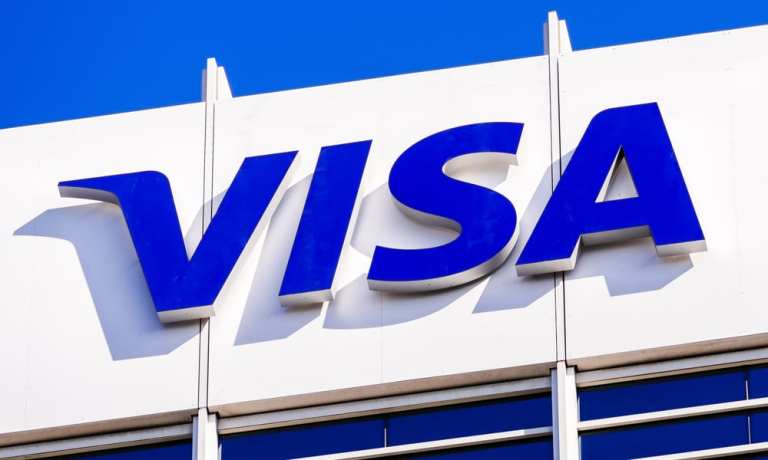Visa: Tap-to-Pay Transactions Grow 40 Pct YoY

Visa posted fiscal second-quarter results that showed a precipitous falloff in cross-border volumes late in the quarter amid the coronavirus pandemic, alongside what it termed a “significant deterioration” in spending that was evident in March.
Those declines were offset at least in part by what management characterized as a long-standing shift to contactless payments and a move away from cash transactions.
In terms of headline numbers, adjusted earnings were $1.38 per share, a nickel better than the Street had expected. Revenues, at about $5.9 billion, were up 7 percent year on year and roughly in line with consensus.
Drilling down into what drove top-line results, the company said that total payments volume was up 5 percent year on year in the quarter.
Cross-border volume was off 2 percent.
CEO Al Kelly told analysts on the conference call to discuss results that the first two months of the quarter had been promising ones. But business was substantially disrupted, he said, as the pandemic hit, and consumers pulled back on discretionary spending.
But, he added, beyond the disruption, several key trends remain in place, chief among them the evolution of Visa toward, as he put it, “a single point of connection.”
As had been seen with payments networking peer Mastercard, Visa said that its latest quarter showed greater traction in debit transactions than in credit. The company logged 9 percent growth in debit, as measured in constant currency, versus a 1 percent gain in credit to a respective $1 trillion and $1.1 trillion.
Total transaction count was up 8 percent for the company, and processed transactions were up 7 percent to 34.9 billion.
Total debit cards were up 5 percent to 2.3 billion, while credit cards were up two percent to 1.2 billion.
Kelly said on the call that 60 percent of face-to-face transactions outside the U.S. were tap to pay. He said that overall tap-to-pay payments were up 40 percent year over year.
He said that tap to pay functionality had been enabled at nine of the top 10 issuers and that 175 million tap-to-pay cards had been issued in the United States.
Looking into trends beyond the end of the quarter, and as measured through April 28, supplemental materials provided by the company show that processed transactions troughed into April, down about 30 percent but have since rebounded a bit, down about 20 percent through the end of that period.
Kelly and Chief Financial Officer Vasant Prabhu noted that excluding coronavirus-hit verticals such as travel and entertainment, spending improved for markets such as home improvement. But the CFO noted that, overall, for April, spending across all cards was down 19 percent, as measured year on year. Bucking that overall trend were double-digit gains in spending across food and drugs, accounting for one-fifth of spending, according to Prabhu, and among the only categories still growing, up 20 percent in April.
Essentially all that growth is coming from online spending, he said, up more than 100 percent in the last two weeks of April, assisted by curbside pickup and delivery. Another one-fifth of spending is in categories that are less discretionary, like telecom and utility and insurance payments. Those payments are flat as measured year over year in April.
Prabhu said that “by the last week of March, payments volume [in the U.S.] were declining 28 percent.” Credit spending was off by more than 25 percent every week in April, he said. But debit was down in the mid-teens through the first two weeks of April.” In the last two weeks of April, there was a positive impact across debit spending tied to the first waves of stimulus payments.
“It is too early to tell” if that upturn, said Prabhu “is the start of a recovery, or will fade in a couple of weeks.” Card not present, or eCommerce volumes, excluding travel, were up 18 percent in April. Card present volumes were down 45 percent.